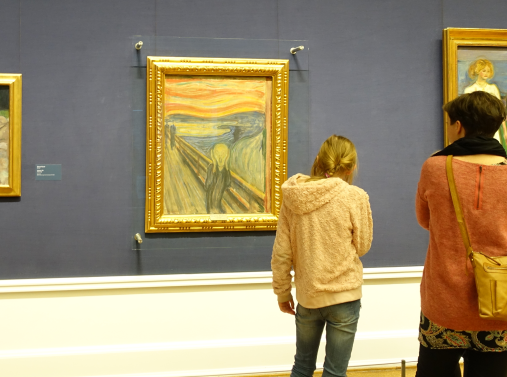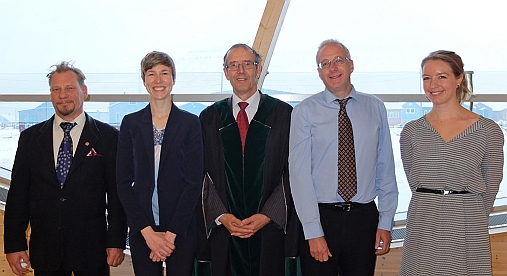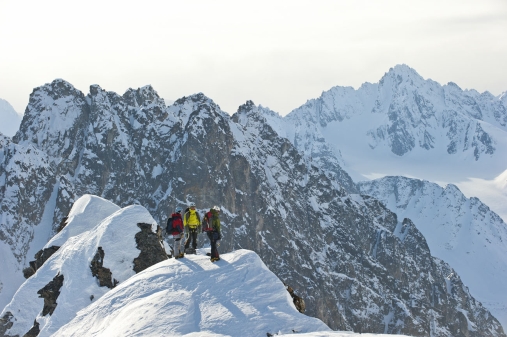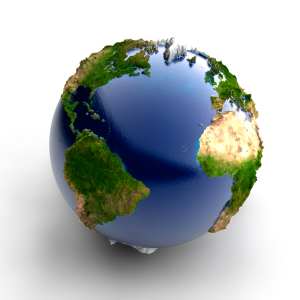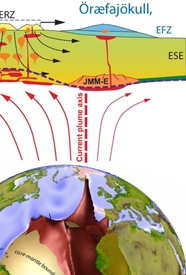Glaciers are in constant motion forward, but now and then some of them have very fast movements forward - a surge - and loose much of its ice mass in the front. Scientists try to understand the physics and the icemass loss in these movements. Four of University of Oslo's experts in glaciology and remote sensing at Department of Geosciences are now interviewed in an article in the scientific journal Science about claciers and surging events.
From the archive
There are many glaciers in the Norwegian landscape. They are at risk of decline drastically and perhaps disappearing due to a warmer climate. Especially exposed are the glaciers in Northern Norway and the smallest glaciers. Interview with Solveig Havstad Winsvold in the newspaper Morgenbladet in the column 'The doctor answers' in June.
“Scream”, Edvard Munch’s painting, shows a blood-red sky over the Oslo fjord. “Suddenly the sky became red as blood” - Munch describes this event as scaring. Was it pollution particles from a volcano eruption which caused this red sky? Three Norwegian meteorologists offer an new hypothesis: was it mother-of-pearl clouds Munch saw and painted in 1892.? The article in the journal Weather has got huge media attention.
The new article from Trond H. Torsvik et al about Mauritia - the lost continent in the Indean Ocean gets a lot of attention from the press worldwide. Latest is an article in the German weekly news magazine Der Spiegel, one of Europe's largest publications of its kind.
CEEDs Researcher and geologist Grace Shephard has been in duty on board on the Swedish icebreaker Oden, and explains how they collect core samples from the sea floor.
The American magazine The New Yorker recently followed a research team collecting data from the Chhota Shigri Glacier in India. In the article they followed among others postdoc Markus Engelhardt, Department of Geosciences in his work to check the camp’s weather monitor, which had been planted four months earlier, and recorded temperature, solar radiation, and barometric pressure. The aim of the study is to find out if and how fast the glacier is melting.
Glaciers on Svalbard behave very differently from other glaciers worldwide. They advance massively for some years and then quickly retreat – and then remain quiescent for fifty to a hundred years – before they once again start to advance. Professor Jon Ove Hagen at Department of Geosciences, University of Oslo is recently interviewed in Apollon about Svalbards pulsating glaciers. The article has got attention by several international research websites.
There are many areas with permafrost both in Norway and Iceland, although the two countries have different climate and soil conditions. Models show that land areas with permafrost are about 8% of the total landsurface, but with somewhat smaller percentage for Norway's part. Researchers at the Department of Geosciences have studied permafrost over time both in Norway and Iceland. Professor Bernd Etzelmuller recently has contributed with two articles with status reports for permafrost for Norway and Iceland in the WWWs The Circle.
In October deffended Heïdi Sevestre at Department of Geosciences and UNIS her PhD thesis. In her PhD she has investigated the global distribution of surge-type glaciers and uncovered differences in geometry between normal and surge-type glaciers. Read about her research in an article at UNIS webpages.
Svalbard`s mountains are older than we previously believed. On research expeditions to get rock samples of the Spitsbergen`s peaks the researchers found mountains that was ancient and little prone to erosion. The study is published in Nature Geoscience with first author Endre Før Gjermundsen, many colleagues from UNIS and others. Otto Salvigsen, Department of Geosciences, is co-author of the article.
If we could fix the climate problems with different engineering techniques would they be easy to solve, or not? Geoengineering also named climate engineering is to do interventions in the Earth’s climatic system with the aim of reducing global warming. Such intervenions can also cause negative effects. Media attention and coverage after a press conference at European Geosciences Union (EGU) 2015 for Helene Muri, researcher at University of Oslo.
At Öræfajökull on the saga Island, it may be a bit of an ancient continent. The area is well known because it stands out from the rest of Icelands geological characteristics. Researchers from the Centre for Earth Development and Dynamics - CEED - have in their article in PNAS launched a theory about that the area remains of an ancient continent perhaps a bit of Greenland. The article has got attention in the media.
After over 35 years the Chinese Chang’E-3 mission is the first to visit and land on the lunar surface. The objetive for the Space Craft is to explore the surface rocks and the substrate on the Moon. CEED, Department of Geosciences's postdoc Zhiyong Xiao participates in the mission team, and the first results reveals a vivid geologic picture of the landing site.The results published in Science recently attracted international attention in both European and Asian websites for news in natural Sciences, three of them linked up below:
Austfonna, Europe’s largest glacier do we find on the island Nordaustlandet in the archipelago Svalbard. The glacier has moved with increased speed in the last few years, and in 2014 the glacier moved a total of 3800 meters. Glaciologist and professor Jon Ove Hagen Methlie, Department of Geosciences, University of Oslo is interviewed about Austfonna and says that surging in Svalbard’s glaciers is natural as a cyclical phenomenona.
Science 12 December 2014 - Editors' Choice - Bottom-up effects on Northern glaciation based on articles from CEED researchers.
The Day of geography is arranged for the first time 17 November 2014. The day is marked in the form of a Web portal where people who work with geography or geomatics publish a post about how a work day looks like. Teachers and students and others interested can then see what work human geographers and geographers do in a ordinary day. One who has published a post is Benjamin Laken from MetOs, Department of Geosciences.


